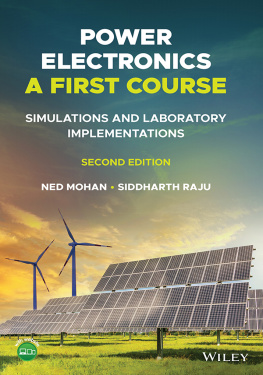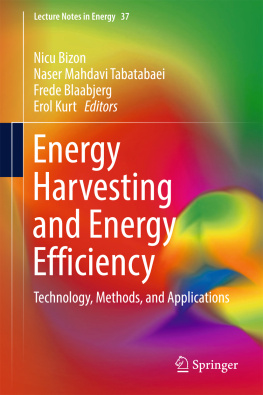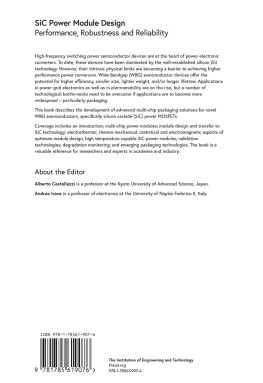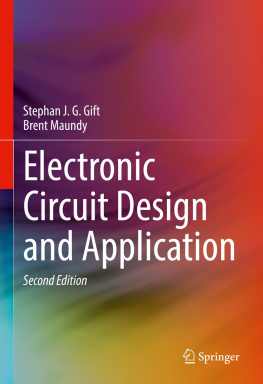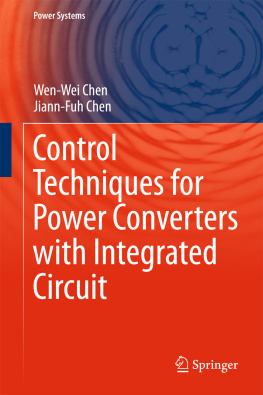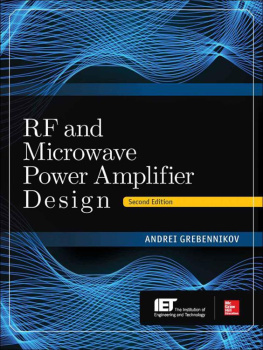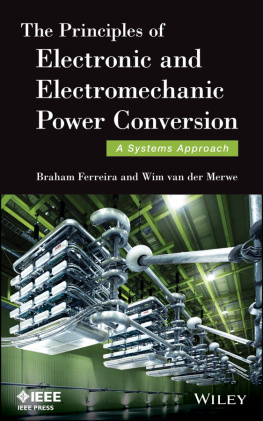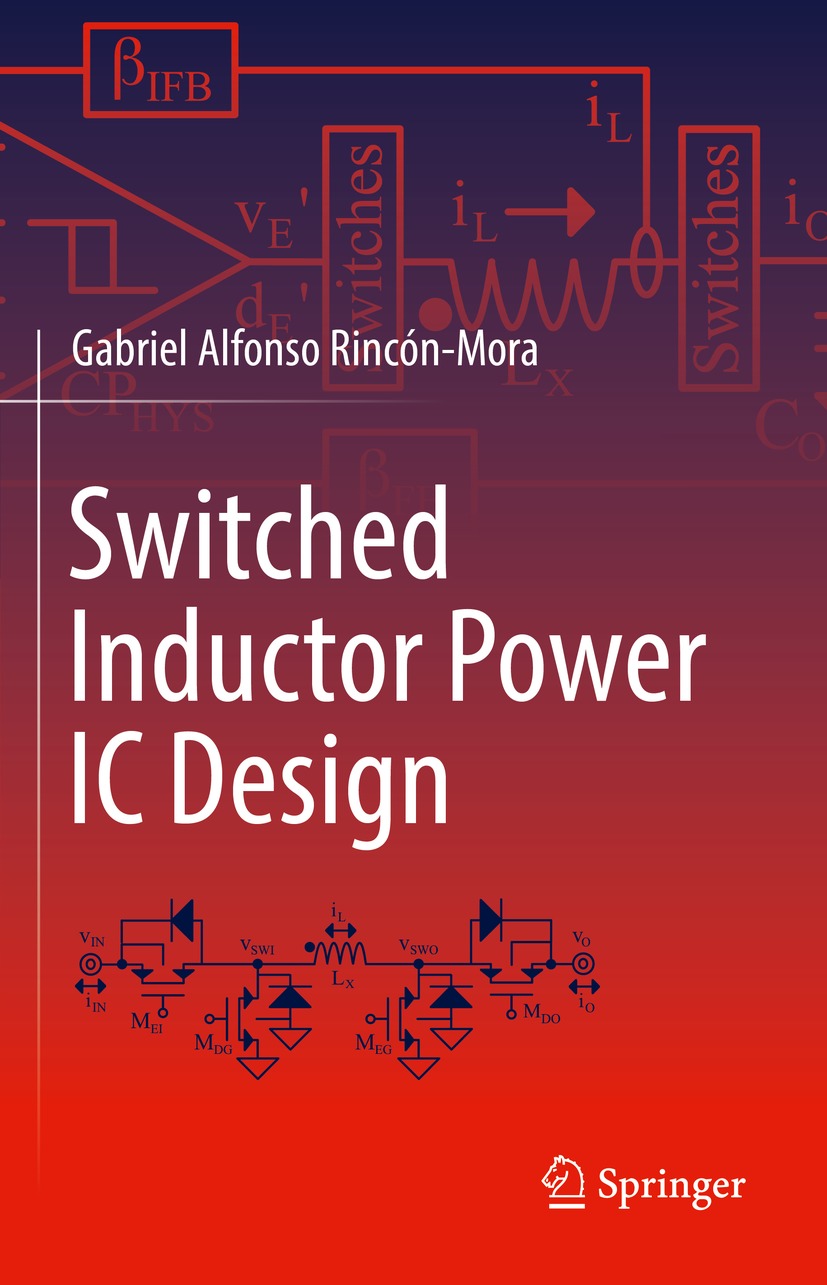Gabriel Alfonso Rincn-Mora
School of Electrical and Computer Engineering, Georgia Institute of Technology, Atlanta, GA, USA
ISBN 978-3-030-95898-5 e-ISBN 978-3-030-95899-2
https://doi.org/10.1007/978-3-030-95899-2
The Editor(s) (if applicable) and The Author(s), under exclusive license to Springer Nature Switzerland AG 2023
This work is subject to copyright. All rights are solely and exclusively licensed by the Publisher, whether the whole or part of the material is concerned, specifically the rights of translation, reprinting, reuse of illustrations, recitation, broadcasting, reproduction on microfilms or in any other physical way, and transmission or information storage and retrieval, electronic adaptation, computer software, or by similar or dissimilar methodology now known or hereafter developed.
The use of general descriptive names, registered names, trademarks, service marks, etc. in this publication does not imply, even in the absence of a specific statement, that such names are exempt from the relevant protective laws and regulations and therefore free for general use.
The publisher, the authors and the editors are safe to assume that the advice and information in this book are believed to be true and accurate at the date of publication. Neither the publisher nor the authors or the editors give a warranty, expressed or implied, with respect to the material contained herein or for any errors or omissions that may have been made. The publisher remains neutral with regard to jurisdictional claims in published maps and institutional affiliations.
This Springer imprint is published by the registered company Springer Nature Switzerland AG
The registered company address is: Gewerbestrasse 11, 6330 Cham, Switzerland
Summary
The aim of this textbook is to show and illustrate with insight, analysis, examples, and simulations how to design switched-inductor dcdc power supplies. The book adopts a ground-up approach, from devices to systems. Chapters on system composition and architecture. The emphasis throughout is on design.
Chapter reviews how PN, Zener, and Schottky diodes and bipolar-junction transistors (BJTs) block and conduct current. It starts with how solids and semiconductors behave and how adding impurity dopant atoms alters their behavior. With these concepts in hand, the material then details the operating modalities, characteristics, and response of PN and metalsemiconductor junction diodes and BJTs, including electrostatic behavior, band diagrams, currentvoltage translations, capacitances, recovery times, breakdown mechanisms, structural variations, and more.
Chapter reviews how junction and metaloxidesemiconductor (MOS) field-effect transistors (FETs) block and conduct current. It describes how MOSFETs accumulate, deplete, and invert their channels and how they saturate their currents in cut off, sub-threshold, and inversion. It also discusses body effect, weak inversion, how gatechannel oxide capacitance distributes across operating regions, and short-channel effects, like drain-induced barrier lowering (DIBL), surface scattering, hot-electron injection, oxide-surface ejections, velocity saturation, and impact ionization and avalanche. Discussions extend to varactors, MOS diodes, lightly doped drains (LDD), diffused-channel MOSFETs (DMOS), junction isolation, substrate MOSFETs, welled MOSFETs, and electronic and systemic noise coupling and injection.
Chapter explains how inductors and transformers work and how switching power supplies use them to transfer power. It discusses the applications that demand these switched inductors and the steps and precautions taken when implementing them with complementary MOS (CMOS) integrated circuits (ICs). It also describes how ideal, asynchronous, and synchronous buckboost, buck, boost, and flyback dcdc converters operate and how their voltages, currents, duty cycles, and conduction modes relate.
Chapter details how switched-inductor power supplies consume power that is otherwise intended for the output. It discusses the significance of these power losses in voltage regulators, battery chargers, and energy harvesters and the mechanics that govern them. The material explains and quantifies how resistances, diodes, transistors, and gate drivers burn Ohmic, dead-time, currentvoltage overlap, and gate-charge power in continuous and discontinuous conduction. Concepts discussed include power-conversion efficiency, fractional losses, maximum-power point, the power theorem, reverse recovery, soft switching, and so on. This chapter also shows how to use these concepts to design power switches and gate drivers and how losses ultimately alter, dominate, and peak conversion efficiency.
Chapter describes how switched-inductor power supplies react and respond across frequency to dynamic fluctuations. It explains the guiding principles that govern two-port models to ultimately show how switched inductors reduce to simple current- and voltage-sourced networks. The chapter also shows how couple, shunt, and bypass capacitors and inductors respond individually and collectively with and without current- and voltage-limiting resistances. With this insight, deriving the frequency response of loaded bucks, boosts, buckboosts, and flybacks in continuous and discontinuous conduction is more insightful and easier to comprehend and apply. Along the way, this chapter introduces and explains capacitor and inductor poles, in- and out-of-phase left- and right-half-plane zeros, reversal poles and zeros, transitional LC frequency, LC quality and gain, peaking and damping effects, and other relevant concepts that help describe switched LC networks.
Chapter shows how to control and stabilize switched-inductor power supplies. It explains how inverting feedback loops mix, sample, and translate signals across the loop, how they respond across frequency, and how pre-amplifiers, parallel paths, and embedded loops alter their response. This chapter also discusses how power-supply systems use operational amplifiers (op amps) and operational transconductance amplifiers (OTAs) to stabilize feedback systems. With this understanding and insight in hand, the chapter explains how analog and digital, voltage- and current-mode, and voltage and current controllers manage and stabilize switched inductors in continuous and discontinuous conduction. Along the way, it introduces and reviews phase and gain margins, gainbandwidth product, unity-gain projections, stabilization strategies (Types I, II, and III: dominant pole, polezero pair, and polezerozero triplet), non-inverting and inverting feedback and mixed op-amp translations, inherent stability, digital gain and bandwidth, limit cycling, and other relevant concepts that help describe, quantify, and assess feedback controllers.
Chapter explains how feedback loops control switched-inductor power supplies. It describes how pulse-width-modulated (PWM), hysteretic, and constant-time peak/valley loops switch the inductor, offset the current or voltage they control, and respond to fast input or output variations. It also illustrates how summing comparators can contract control loops and remove the loading effect that current-mode voltage loops normally exhibit. The chapter ends with compact, fast, and low-cost resistive, filtered, and voltage-mode voltage-looped (voltage-squared) bucks. Along the way, the material introduces and reviews comparators, hysteretic comparators, summing comparators, pulse-width modulators, setreset (SR) flip flops, pulse generators, sub-harmonic oscillations, and slope compensation.


